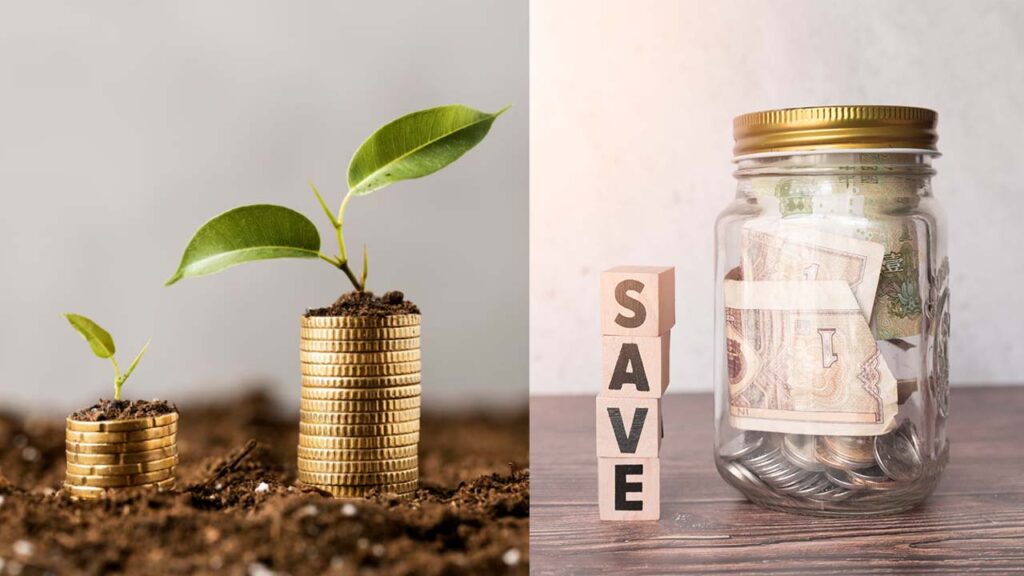
When it comes to managing your finances, one of the most common questions is: Should I save or invest my money first? Both saving and investing are crucial components of a healthy financial plan, but they serve very different purposes. Understanding the difference and knowing when to prioritize one over the other can help you reach your financial goals faster and with less stress.
This guide will help you navigate the decision between saving and investing by explaining the key differences, benefits, risks, and strategies for each approach.
Understanding Saving and Investing
What Is Saving?
Saving refers to putting money aside in low-risk, easily accessible accounts like savings accounts, money market accounts, or certificates of deposit (CDs). The primary goal of saving is preserving your money and having it readily available for short-term needs or emergencies.
What Is Investing?
Investing means putting your money into assets such as stocks, bonds, mutual funds, real estate, or other vehicles with the goal of growing your wealth over time. Investments typically come with higher risks but also offer the potential for higher returns compared to savings.
The Purpose of Saving and Investing
Saving: The Safety Net
Savings are essential for building an emergency fund—money you can access quickly to cover unexpected expenses like medical bills, car repairs, or job loss. Having an emergency fund protects you from financial stress and the need to rely on high-interest debt.
Savings also help with short-term goals like vacations, home improvements, or buying a new gadget. Since the money may be needed soon, it’s best to keep it in low-risk, liquid accounts.
Investing: Growing Your Wealth
Investing is about building long-term wealth and outpacing inflation. While savings accounts offer safety, their interest rates often don’t keep up with rising costs, meaning your money may lose purchasing power over time.
Investing in stocks, bonds, or real estate allows your money to potentially grow significantly, helping you reach big goals such as retirement, buying a home, or funding education.
When Should You Save First?
Saving should be your priority if:
- You don’t have an emergency fund. Experts recommend saving 3 to 6 months of living expenses before investing heavily.
- You have short-term goals (less than 3 years away) that require stable capital.
- You’re paying off high-interest debt, like credit cards. It’s usually better to eliminate expensive debt before investing aggressively.
- You anticipate needing access to cash soon.
Savings accounts provide peace of mind and prevent you from needing to sell investments at a loss during emergencies.
When Should You Start Investing?
Investing becomes a priority when:
- You have an emergency fund fully funded.
- Your financial goals are long-term (5+ years), such as retirement or college savings.
- You want to grow your wealth beyond what savings accounts offer.
- You have a stable income and can afford to take some risk with your money.
The earlier you start investing, the more you benefit from compound growth, where earnings generate more earnings over time.

Balancing Saving and Investing: A Practical Approach
Most financial advisors suggest a balanced approach. Here’s how you might structure your finances:
1. Build Your Emergency Fund
Aim to save 3-6 months of essential expenses in a high-yield savings account. This fund acts as your financial safety net.
2. Pay Down High-Interest Debt
Focus on eliminating debts with interest rates above 7-8% before investing heavily. The guaranteed return of paying off debt often exceeds investment gains.
3. Start Investing Regularly
Once your emergency fund is set and high-interest debt is under control, begin investing a portion of your income. Consider starting with employer-sponsored retirement accounts like a 401(k), especially if there’s a match.
4. Continue Saving for Short-Term Goals
Maintain a separate savings account for goals you want to achieve within 3 years, such as a vacation or a car purchase.
Risks and Considerations
Saving Risks
- Inflation Risk: Over time, inflation can erode the purchasing power of money in savings accounts.
- Low Returns: Savings accounts generally offer low interest rates, limiting growth potential.
Investing Risks
- Market Volatility: Investments can lose value, sometimes significantly, especially in the short term.
- Liquidity Issues: Some investments are harder to sell quickly without losing value.
- Emotional Stress: Market downturns can be stressful and tempt investors to sell at the wrong time.
Tools to Help You Save and Invest
High-Yield Savings Accounts
Ideal for emergency funds and short-term savings, these accounts offer better interest rates than traditional savings.
Retirement Accounts
401(k)s, IRAs, and Roth IRAs offer tax advantages to help your investments grow over time.
Robo-Advisors
Automated investing platforms that build diversified portfolios based on your risk tolerance and goals, making investing accessible for beginners.
Budgeting Apps
Track your income, expenses, and progress toward savings and investment goals.
Final Thoughts: Where Should You Put Your Money First?
The decision between saving and investing isn’t about choosing one over the other—it’s about knowing when to focus on each.
Start by securing your financial foundation with a solid emergency fund and managing high-interest debt. Then, shift focus to investing to grow your wealth and meet long-term goals. Throughout, continue saving for short-term needs.
By balancing saving and investing wisely, you’ll build both financial security and future prosperity.